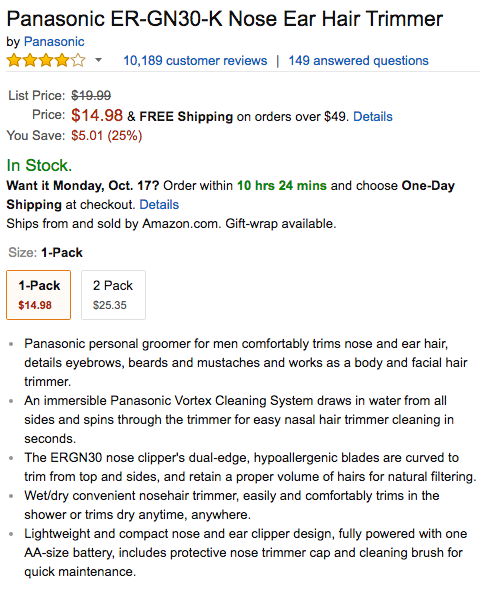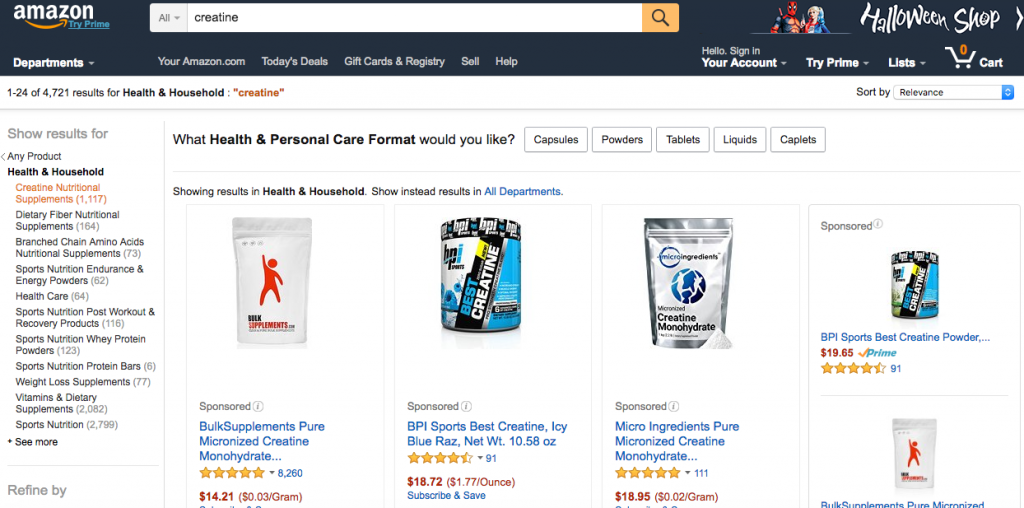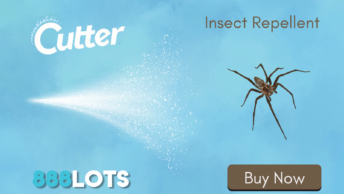Selling on Amazon is awesome. It really is. It’s taken regular people and given them six and seven figure incomes. I know this. I work with them.
But being a successful Amazon seller means not only choosing what products to sell, but also understanding how to rank them on Amazon.
Easier said than done, my friends.
The goal of this blog post is to teach you to become an Amazon product ranking ninja using an array of tactics. You have to think of yourself as a mad scientist. You’re running a ton of experiments with the goal of achieving a high rank with great sales volume for relevant keywords.
Let’s put on our lab jacket and jump right into these experiments.
Experiment #1: Source a Low Competition Product
Ranking #1 for a keyword on Amazon isn’t actually that hard if you have a lot of money. Since sales velocity is the #1 ranking factor on Amazon then all you have to do is use a blast service like Viral Launch or do a ton of giveaways to get you to the top. This method doesn’t work effectively as it has historically but is still powerful.
In addition to a blast you can just spend a ton of money on Amazon Sponsored Products to help rank for main keywords as well.
With enough capital it’s possible to compete for top spots in some of the most competitive markets. But staying in those top spots will only be temporary.
This method is definitely a brute force method and overall doesn’t work well if you’re looking to be profitable quickly.
How do we define competition?
It’s very simple. After typing in the main keyword for the product you want to sell analyze the top 10 listings. I like to look for 3 or more sellers with less than 50 reviews. Additionally, I don’t like to see any listings with more than 250 reviews in the top 10.
This ensures that I can come into the market and rank for top keyword phrases fairly quickly.
So that’s experiment #1: Find and source a product with low competition based on the above criteria. If you already have a product you can skip this experiment.
Experiment #2: Keyword Research and Listing Setup
This is one of my specialties. In my former career in SEO and in my current position as an Amazon PPC consultant I’ve spent hundreds of hours doing keyword research.
I’ve come to the conclusion that keyword research is important on Amazon.
Why? Because it works.
Let me give you some insight into the mechanics of how keyword research influences organic rankings.
When you create your title, bullets, description, and back end search terms you’re telling Amazon’s technology exactly what you want to rank for in the search results. The words in your listing are a form of communication.
Amazon’s A9 algorithm cannot read your product’s mind so it’s your job to tell them exactly where you want to be positioned organically.
I’ve used a ton of keyword research tools. Maybe too many. But at the moment there are 4 keyword research tools I use frequently:
- Merchant Words
- Keyword Inspector
- Top 3 Competitor Listings
- Websites
Basically I use the keyword I used to find the product as the keyword I do the research with. For example, let’s say we want to sell ‘nose trimmer’. I would then go to Amazon, search for that word, find the top 3 organic listings and analyze them. I would take notes on keywords I want to add into my listing.
Below is a screenshot of the listing content for the #2 organically ranked product for ‘nose trimmer’.

The title is the first place to look for keywords. I’m seeing ‘nose ear hair trimmer’. Also, I see the words ‘beards’ and ‘mustaches’ in the bullets. I could go on forever with finding keywords but I think you get the point. Make sure these words are in your listing. That way your listing can be correctly organically positioned on Amazon.
A more advanced way to spy on competitors is to use Keyword Inspector’s reverse ASIN tool. This tool shows you exactly what keywords your competitors are ranking for on Amazon. That’s some pretty powerful data. They also give amazon search volume estimates which are great for PPC as well.
Also, we could take ‘nose trimmer’ and plug it into Merchant Words. Merchant Words will give us a list of keywords containing ‘nose trimmer’ along with estimated search volume. Knowing estimated search volume is extremely important because it predicts how much traffic you can potentially get to your listing:

Finally, go over to google, plug in ‘nose trimmer’, and read the product listings of competitors with their own websites or listings on Google Shopping. This can give you insight into the types of phrases to use in your listing, back end search terms, and Sponsored Ads.
Setting up your listing content is crucial to gaining traffic on Amazon. Add your most important keywords and keyword phrases in the title. The title makes a HUGE impact on Amazon SEO and ranking.
Then put the rest of the keywords in the bullets and description. Bullets are definitely more important than the description so make sure you figure out a way to prioritize keywords.
You don’t need to mention your keywords more than once on the front end (title, bullets, or description) but you probably will to make it easy to read for the shopper.
I recommend filling up the title, bullets, and description with as many characters as possible. Some might say otherwise but as long as it brings value to the reader then it’s okay. Using all of the characters is important because it will give you the maximum amount of organic ranking positioning.
Below is an example of a product listing with room for improvement:

First, we see that they’ve only used 78 of the 250 characters possible in the title. The title is the most important piece of content in a listing. Capitalizing on those 250 characters is crucial. Also, title character limits can vary so make sure you hover over an ‘i’ icon and it will show you…like this:

You can do that for the bullets and product description as well. Keep in mind if you go past the limits Amazon can suppress your listing. That’s no good because that means Amazon has taken the listing out of their search engine. No worries though. As long as you make the change your listing will be live again instantly.
For most products the limit is 100 characters per bullet but hover over the ‘i’ icon in seller central to verify for yourself. If our limit is 100 characters then we see in the above listing they are only using 47 characters. That leaves plenty of room for more keywords.
I don’t think we necessarily need to analyze the description because as long as you apply the recommended methods for the title and bullets to the description you’ll be fine.
In regards to the back end search terms I recommend adding your keywords from the front end (title, bullets, description) to the back end. Be sure to take out words like ‘and’, ‘if’, or anything else that isn’t relevant. You don’t need any unnecessary words on the back end search terms.
Also, use spaces, don’t duplicate keywords, and don’t add brand names to the back end. The best way to optimize them in terms of characters is to add 500 characters per row for the first 4 rows. I know it’s possible to add up to 5,000 characters but research shows that more than 2,000 characters can break the indexation of the back end.
Experiment #2: Choose 2 of the above tools to do keyword research and save them in an Excel spreadsheet or Google Sheets in preparation for writing your listing. Use the above listing recommendations to optimize your listing with keywords from the keyword research. Remember to use character limits to maximize the amount of RELEVANT keywords you put into the listing. This will maximize your organic exposure on Amazon and help with ranking your product for several keywords.
Experiment #3: Pricing
Pricing can play a big role in ranking on Amazon. One of the fundamental principles of Amazon is that a lower price increase sales velocity…and increased sales velocity results in increased rankings on Amazon.
Do research on your market and determine what you want your full price to be. Then record what your break even price is.
How do you determine pricing for your product? Look at the top 10-15 listings in your market and make notes of their prices. Then develop a price that is competitive with the market. If you price too high you’ll kill your sales volume and any chance of ranking well on Amazon. I’ve seen it happen before.
To increase ranking dip your price below your competitors to increase sales velocity. Then increase the price by $0.50 to $1 every 3 days. Record the date and amount of every price change. Running this type of experiment will give insight into how much profit you can extract from the market before seeing a dip in sales velocity.
How does this help with ranking? Well, in addition to getting a huge boost in sales velocity because of the low price, finding the ideal price point allows you to be as profitable as possible while maintaining your organic positioning. Now you have extra profit to invest in Amazon Sponsored Ads, inventory for Q4, or a vacation to Disneyland. 🙂
Experiment #3: Use the above method to find your market’s ideal price point.
Experiment #4: Giveaways
Amazon rocked seller’s world on October 3, 2016 with their ‘Update on Customer Reviews’. This update stated that Amazon sellers are no longer able to ask for reviews in exchange for discounted or free products.
This is huge. Giveaways are fundamental to launching on Amazon because they increase sales velocity while providing social proof with product reviews.
Sellers can still use giveaway (Review Kick which is now Jump Send, GetBSR, etc.) and launch services (Zonblast, Viral Launch, etc.). It’s just that now they can’t directly ask for reviews in their email follow-up sequence when the product is purchased at a discount.
You should definitely use giveaway services when launching, re-launching, or to gain traction in the market because they definitely help with organic ranking.
How many product reviews should you target? I recommend targeting the review count of one of the competitors in the top 10 organic search results. This isn’t a hard and fast rule because it’s important you use the data you collect during your giveaway to determine how many reviews you need. It is a good general measurement.
The bottom line here is giveaways and launch services are an essential ingredient in the recipe for ranking your products on Amazon.
Experiment #4: Use a giveaway or launch service to increase organic sales volume and gain higher organic positioning in your market.
- Amazon Sponsored Ads
I spend a lot of my time consulting on Amazon Sponsored Ads for other sellers.
It can definitely help with ranking on Amazon. How? Well, let’s say you use a launch service like Viral Launch and you target the keyword ‘nose trimmer’. I highly recommend making sure that you are bidding on this keyword phrase in the exact, phrase, and broad match.
Amazon doesn’t differentiate sales from ads and sales from organic. They are counted the same in their algorithm. This means sales from ads contribute just as much as organic sales to ranking on Amazon.
Something to keep in mind is advertising is a type of ‘ranking’ on Amazon. Why? Because Sponsored Ads appear above organically ranked products in some searches:

In the above Amazon search for ‘creatine’ all I can see on my screen is Sponsored Ads listings. That means I have to scroll down to see organic listings. These are technically ‘ranked’ higher than organic listings because Amazon gives preference to their advertising platform.
Also, by bidding on a variety of keywords your ads will appear in different parts of the market on Amazon. Once you get sales for these keywords you will increase your organic rank on top of having Sponsored Ads spots.
Before we wrap up this post I want to share true stories from two different sellers. The results will blow your mind.
A Tale of 2 Sellers
Jane taught herself how to sell private label products on Amazon by reading blogs, listening to podcasts, and interacting in the Facebook groups. This is how a lot of Amazon sellers started.
After learning from everyone else she decided that she needed to take action.
She found a low competition product with 2-3 sellers in the top 10 listings with less than 50 reviews and the top players only having between 100-250 reviews. Also, there were no Sponsored Ads showing for the keyword.
Jane decided to do some heavy keyword research to optimize the title, bullets, description, and back end search terms. She also got high quality photography done and started using Sponsored Ads.
Guess what? She did no giveaway, had no reviews, and started selling the products profitably right away with Sponsored Ads.
After about 8 days her product was in the top 5 and she’s doing great.
On the other hand we have Jeff. He went through the same learning process as Jane except he entered a high competition market.
3 or more sellers in the top 10 had 500 or more reviews for the main keyword.
Jeff did a 100 unit giveaway coupled with aggressive Sponsored Ads campaigns.
The Amazon Sponsored Ads sales skyrocketed along with the keyword rankings and sales rank. The listing was optimized beyond belief with relevant keywords, keywords from PPC data, spanish words, and misspellings.
The listing was ranked organically on page 1 and had the #1 Sponsored Ads spot for the main keyword. Organic organic sales only increased to a measly 2 or 3 per day.
Jeff was losing money and not gaining any traction in the market even though his rankings were great and he was doing well with Sponsored Ads.
Why? Because competitive markets don’t follow the same rules as low competition markets.
How do I know this? Because I’ve spent hundreds of hours optimizing accounts and analyzing reports.
Here are a couple of additional observations I’ve made about competitive markets that lead to this erratic behavior:
- Established Brands Dominate the Market – How do you know? Type the brand name as a keyword into Merchant Words and find out if the top brands in your market have search volume. If so, then that’s bad news because they brand loyalty. You’ll also most likely recognize national brands for specific products.
- Listings With Ongoing Reviews – If you notice that your competitors keep getting a ton of reviews then it will be difficult to keep up.
- Black Hat Tactics – Sellers in competitive markets will use tactics that break Amazon’s Terms of Service to win in their market. It’s the truth.
Also, here’s a quick video on how to spot competitive markets:
In Conclusion
Selling on Amazon is a great opportunity for a ton of people. Amazon has taken regular people and created motivated entrepreneurs. It’s an amazing place.
But being successful on Amazon means knowing how to rank your products to generate sales volume. And to rank on Amazon it’s crucial to understand the experiments you can run to influence your ranking.
I highly recommend running some or all of the above experiments. In general, they work. I’ve tested them over and over.
That’s it folks. I hope you enjoyed learning how to rank your products on Amazon.
Thank you so much for reading and please try a few of these tactics out.
Leave any comments or questions below.
Sean Smith is the Founder of Jungle Hustle, an agency helping Amazon sellers increase revenue and profit by providing services in Amazon Sponsored Ads (PPC) management and product photography. He’s also a Master Instructor at Sponsored Ad Superstars, a course helping sellers select high profit, low competition products and how to use Sponsored Ads to supercharge sales on Amazon. Visit junglehustle.com to contact him.







